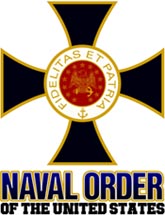South America
Uruguay
Bruno Mauricio de Zabala, Governor of Buenos Aires, founded the town of Montevideo in 1726 to stop the Portuguese advance from Brazil.
A View of Montevideo
William Marlow

The city began as a Spanish garrison. When the Spanish Crown granted the Puerto de Montevideo the right to be the region's only slave port, the Puerto de Montevideo experienced its first economic boom.
In 1776, it became Spain's main naval base in the South Atlantic with power over the Falklands and the Argentine coast. Near the end of the colonial era, the Puerto de Montevideo's merchants had a big part to play in Uruguay's independence. The Puerto de Montevideo became Uruguay's capital in 1828.
In the early 19th Century, Spanish, British, Argentine, Brazilian, and Portuguese armies occupied the Puerto de Montevideo. Both population and trade declined in those years. Even when Uruguay won its independence in 1830, stability was out of reach.
Under the influence of Brazilian, Argentine, and local groups, the Puerto de Montevideo was besieged and blockaded by a combined Uruguayan-Argentine army from 1843 until 1851. British and French forces helped the city's defenders. Despite these problems, the Puerto de Montevideo flourished and was the most important port in the Rio de la Plata region.
Montevideo, Uruguay's capital, rapidly became a hub of economic activity. Montevideo was not founded until 1726, but its superb port allowed it to gain an increasing role in regional and international trade.
Uruguay, Paraguay, North Argentina. Pre-Chaco War borders. Chile. Johnson, Cartologist. 1906.

In the 1800s, the Uruguayan capital became an important trans-shipment point because European importers and exporters preferred its port to that of nearby Buenos Aires (until the latter was improved in the 1870s).
The wreck of the French brigantine Leopoldina Rosa which left Bayonne on January 31, 1842 with Basque immigrants (French and Spanish) occurred the night of June 9, 1842. Only 79 of the 300 people aboard the frigate survived, including Pedro Antonio Astigarraga. Some of these castaways set foot on this land giving origin to numerous and socially very active families across the region Castles, as the case Lujambio, a distinguished name of Aguas Dulces. The square is named after this vessel as a reminder of the tragedy that marked the entire region.
Another wreck associated with Barra de Valizas was the British barque Bessie Stanton lost off the coast of Uruguay on September 27, 1869.
December 6, 1870, Sacramento Daily Union, Sacramento, California, U.S.A.
AMERICAN PROTECTION. Soon after the existing war broke out in Europe the protection of the United States Minister in Paris was invoked in favor of the North Germans domiciled in French territory. Instructions were issued to grant the desired protection. This has been followed by an extension of American protections to citizens of Saxony, Hesse and Saxe Coburg Gotha, Colombia, Portugal, Uruguay, the Dominican Republic, Ecuador, Chile, Paraguay and Venezuela, in Paris. The charge was an onerous one, requiring constant and severe labor as well as the exercise of patience, prudence and good judgment. It has been performed to the entire satisfaction of this Government...
August 18, 1885, Galveston Daily News, Galveston, Texas
WASHINGTON
THE SOUTH AMERICAN TRADE COMMISSION.
Their Flattering Reception from the Government of Uruguay and the Argentine Republic Steamship Lines Needed, and Uruguay Fights the Wool Tariff.
WASHINGTON, August 17, The commissioners appointed to visit the Central and South American States in the interest of more intimate internal and commercial relations by those countries and the United States, has submitted a report to the department of state of its work on Uruguay and the Argentine Republic. After stating that both at Buenos Ayres, and Montevideo the commission sought from the commercial communities information concerning the present condition of commerce end suggestions as to the best means of promoting trade with the United States, which will be submitted in their report to the president now in course of preparation, the report in part says:
The share of the United States in the enormous commerce of the river Platte country, which includes Paraguay, Uruguay and the Argentine republic, is lamentably insignificant and less than it was half a century ago. The reason is very apparent. Twenty-one lines of steamships connect these ports with those of Europe while there is no regular steamship communication whatever with our country. From forth to sixty steamers arrive at Buenos Ayres every month from Europe and not one from the United States. The few products of our fields and factories found there are brought some times in chartered vessels, but more frequently come by way -of Europe, the merchants with one voice saying that because of the absence of steam communication they can afford to buy in the United States only such articles as can not be obtained elsewhere. The presentation of the commission to the President of Uruguay was made the occasion of a great, deal of ceremony and military display, it being the desire of the government as well as of the people to testify in this manner to their admiration for the "grand republic," as the United States is universally called.
The president of Uruguay and his ministers, after expressing with great ardor their admiration for the United States, their efforts to imitate our government in all things, and their desire for closer relations, accepted, without discussion, each and all of the propositions submitted by the commission except that which relates to a reciprocity treaty with the United States. To this they would have readily assented also had the commissioner felt justified in encouraging them to expect that the Congress of the United States would consent to a reduction or a removal of the duty on wool, this being the chief production of Uruguay, and the only article exported to the United States which is taxed under our tariff.
With regard to the proposed common coin and the international congress they were enthusiastic. The government of Uruguay, they said, was not in such a financial condition as to offer pecuniary aid toward the establishment of a steamship line between its ports and the United States, but they very earnestly hoped that something might be done in this direction and would agree to afford the steamers special privileges in the matter of harbor dues, etc.
The presentation of the commission to the president of Argentine Republic was, at the commissioners' request, attended with as little formality as was consistent with diplomatic rack and usage, and the usual complimentary addresses were exchanged. "The formal topics submitted for consideration at our conference with President Roca and his government," the report continues, "were all cordially approved and accepted by them. No where has the commission met with more genuine cordiality, and nowhere has the desire for closer political and commercial relations with the United States been so apparent as in the Argentine Republic. That country aspires to be to South America what our country is to the northern continent, and is making very rapid strides toward such a position. The president earnestly desired more intimate commercial relations with the United States, but said that it was useless to expect trade without transportation facilities. The Argentine government was willing to do as much as the United States in giving financial aid to a steamship company that would call vessels between the ports of the two countries, and he hoped that our Congress would do something at once, so as to make the markets of the United States accessible to the Argentine importers.
December 22, 1902, Lowell Sun, Lowell, Massachusetts
Boy Is Missing
Is Heir to Acres of Land
The Associated Press to The Sun
WASHINGTON, D.C., Dec. 22, An Immensely wealthy boy, Jose Preston Ames, the 10-year old heir to thousands of acres of the richest land in Uruguay, is the central figure in proceedings In the supreme court, of the district of Columbia which have involved the state department and the minister of Uruguay.Antique Map of North and South America. Amerique: Inset Terres Australes Americaines Printed 1880

That diplomat will be asked to tell the court how the little fellow was placed on the steamer Soldier Prince and sent to South America, while his aunt, who had been appointed his guardian, vainly endeavored to ascertain his whereabouts.
The boy's father was a physician In South America and his mother was a wealthy Spanish woman, born in Europe and who lived most of her life in Uruguay, where she owned vast estates in Salto province on the Uruguay river.
When the boy was 3 months old she started on a trip to the United States. Her husband died during the voyage. She returned to Uruguay.
A few months ago, she came to the United Stales again, accompanied by her son, now 10 years old, and a nephews, Pepito Larroque and Eduardo Larroque. Mrs. Ames died in Washington on December 6. Three days later her sister-in-law, Mrs. Helen G. Sparhawk, had herself named guardian and tried to find the boy that she might take possession of him. She was unable to find him. She declared Pepito and Eduardo Larroque were concealing the boy. She heard the boy had been at the Uruguayan legation. When she went there In December she learned that the boy had been sent to South America on Dec, 13, on the steamer Soldier Prince. Mrs. Sparhawk has now instituted habeas corpus proceedings.
The Larroques swear that the boy was sent away on Dec. 8, the day before Mrs. Spearhawk was appointed guardian and that, acting in accordance with a dying wish of his mother, they sent him to John Benjamin Larroque, who lives in Uruguay. The proceedings are being prosecuted bitterly and sensational developments are expected.
South America: Uruguay1899. World's Fleet. Boston Daily Globe
Lloyds Register of Shipping gives the entire fleet of the world as 28,180 steamers and sailing vessels, with a total tonnage of 27,673,628, of which 39 perent are British.
| Great Britain | 10,990 vessels, total tonnage of 10,792,714 |
| United States | 3,010 vessels, total tonnage of 2,405,887 |
| Norway | 2,528 vessels, tonnage of 1,604,230 |
| Germany | 1,676 vessels, with a tonnage of 2,453,334, in which are included her particularly large ships. |
| Sweden | 1,408 vessels with a tonnage of 643, 527 |
| Italy | 1,150 vessels |
| France | 1,182 vessels |
For Historical Comparison
Top 10 Maritime Nations Ranked by Value (2017)
| Country | # of Vessels | Gross Tonnage (m) |
Total Value (USDbn) |
|
|---|---|---|---|---|
| 1 | Greece | 4,453 | 206.47 | $88.0 |
| 2 | Japan | 4,317 | 150.26 | $79.8 |
| 3 | China | 4,938 | 159.71 | $71.7 |
| 4 | USA | 2,399 | 55.92 | $46.5 |
| 5 | Singapore | 2,662 | 64.03 | $41.7 |
| 6 | Norway | 1,668 | 39.68 | $41.1 |
| 7 | Germany | 2,923 | 81.17 | $30.3 |
| 8 | UK | 883 | 28.78 | $24.3 |
| 9 | Denmark | 1,040 | 36.17 | $23.4 |
| 10 | South Korea | 1,484 | 49.88 | $20.1 |
| Total | 26,767 | 87.21 | $466.9 | |









 Copyright ~ 1998-2018.
Copyright ~ 1998-2018. 